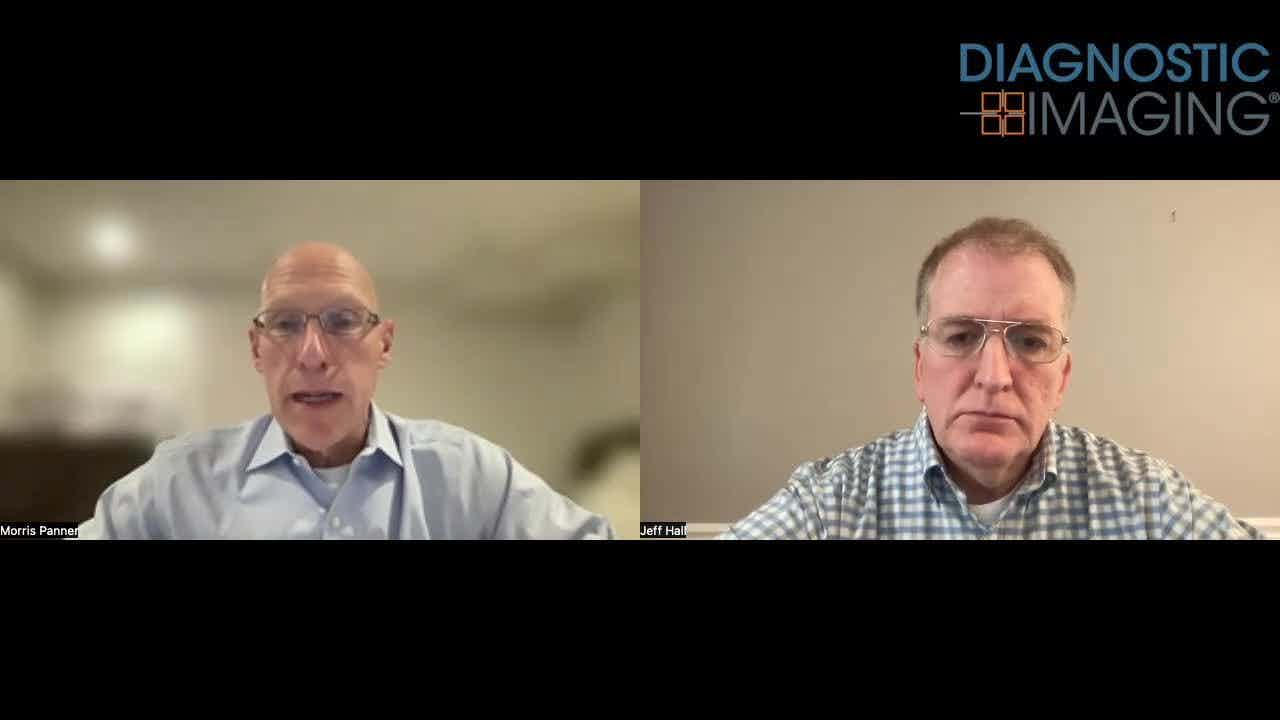Breast centers tune up for peak performance
Times are tough for breast centers. Reimbursement rates are flat, while costs for labor and supplies are climbing. In any other business, managers would be tempted to cut corners to make ends meet. But this is breast care.
Times are tough for breast centers. Reimbursement rates are flat, while costs for labor and supplies are climbing. In any other business, managers would be tempted to cut corners to make ends meet. But this is breast care.
"We do just one thing here," said Theresa Wade, administrator of the Elizabeth Wende Breast Clinic in Rochester, NY, which sees about 350 patients per day for screening and diagnostic mammography. "We find breast cancer, and we have to be good at it."
That doesn't mean breast centers are exempt from conventional cost-cutting practices. The challenge is to apply those techniques without reducing quality in a setting that depends on it. The solution is in-depth knowledge of breast center operations, from pinpointing how much it costs to perform a mammogram to cracking the secrets of procedure scheduling.
"Every procedure that you do, you have to make sure you're efficient and that you are getting reimbursement for services provided," Wade said. "It's about looking at every aspect of your operations. You have to have all the balls in the air at the same time."
In the past, breast centers pinned hopes for a better bottom line on annual pay hikes by Medicare and private payers. But in recent years, those hikes have been too small to make an impact. Centers should not expect reimbursement relief any time soon, said Gerald Kolb, president of Breast Health Management, a consulting firm in Bend, OR. (See accompanying article, page 27.)
"The focus now is on productivity," he said. "We have to concentrate on making our systems functional at a very high level."
Kolb predicts that Medicare spending will at best stay in a holding pattern over the next several years, due to spending in other areas such as the Iraq war and the ongoing federal budget deficits (Table 1).
Moreover, petitions by organizations such as the American College of Radiology for breast imaging fee increases may have an unintended effect.
"Medicare will tell the ACR that it needs to reduce the amount paid on the 7000 series codes by 10%," Kolb said. "They may be willing to increase mammography, but only at the expense of PET, MRI, or something else, because the end result will have to be a zero balance."
Focusing on increased productivity and throughput, as well as better cost management, also helps convince top administrators to continue their support of breast center services, said Greg Pilat, system director of radiology at Advocate Health Care in Oak Brook, IL. He spoke to a group of administrators, physicians, technologists, and nurses at the National Consortium of Breast Centers (NCBC) annual meeting in Las Vegas in March.
"If you do not get operating costs in balance, then as an administrator, I can't provide you with the tools, resources, personnel, and facilities to perform the kind of quality services that you want," he said. "When things are out of balance, finance will win every time."
Moreover, positive cash flow enables centers to fund vital services that typically receive little or no reimbursement, such as a specialty nurse to accompany patients who need to undergo additional studies, or an aide assigned to each patient who is diagnosed with breast cancer.
GET A GRIP ON COSTS
Before managers can reduce costs, they need to know what their costs are. But few centers track the real cost of doing business from a dollars-in dollars-out perspective, Pilat said.
At Advocate, for example, labor costs average $175 per hour to provide mammography services at any one of the system's 21 breast imaging sites. The amount takes into account salaries and benefits for technologists, transcribers, registered nurses, and receptionists (Table 2). The rate assumes that each technologist is acquiring screening or diagnostic images from two patients per hour, he said.
"We think our techs can handle three patients per hour, but our experience shows that two per hour is the real average," he said. "You do not consistently get three patients per hour per technologist, day in and day out."
In a breakdown by procedure, Pilat said it costs $26.50 in labor costs to provide a screening or diagnostic mammogram, and $53.06 to perform an interventional procedure.
"We are doing two patients per hour now, but based on our reimbursement, we need to be seeing 3.1 patients per hour just to pay salaries," he said. "Many people are complacent and think that their centers are making money, but they are not counting all of the expenses."
Advocate is the largest independent delivery network in the greater Chicago area, with 200 sites of care, including eight adult hospitals, two pediatric centers, and a home health company. Seven radiology groups comprising 166 radiologists are affiliated with the health system.
In 2004, Advocate performed 1.6 million imaging procedures, of which about 10% were mammography. A self-proclaimed bean counter, Pilat explained that breast centers face a harsh reality in the competitive arena of health system budgeting.
"With reimbursement for mammography a flat line, and the cost of labor, supplies, and technology going up, breast centers need a little reality check," he said. "Either you are in the gain or you are in the red. Every budget year, I'm forced to make decisions about where to invest money. The more money you lose, the harder it is for an administrator like me to make fair decisions."
Supplies like film, chemistry, office folders, and breast pads represent another cost center that often defies good management. An assessment of film use by Pilat, for example, found that two-view mammograms involve on average five films, not four. Premium film requires the use of premium processing. Office supplies are another category rife with waste that can add up.
Not every center needs to adopt a quota mentality to be successful, however. At Elizabeth Wende Breast Clinic, it would be difficult to enforce a patients-per-hour benchmark because every patient has an individual problem, Wade said. Technologists at EWBC take time to walk patients from the dressing area to the mammography suite and establish a connection. They acquire and check films and perform additional views if needed.
"We spend more time with patients than most places do, and yes, that costs money," she said. "But it has served us well. We have a very loyal patient and referring physician base."
EVALUATE OPERATIONS
Tracking workflow, procedures, payment, and clinical outcomes is critical to the success of any center. But such efforts are doubly effective when tied to specific goals, such as increasing productivity or decreasing the number of patient recalls.
Pilat advises that a center start by evaluating procedure volume by day, month, or shift. Tracking by days of the week will prove illuminating, he said.
"You'll find that everything falls into a bell-shaped curve, including scheduling," he said. "One of your days will be overutilized, and two or more of your days are probably underutilized."
Another aspect worth tracking is volume of appointments versus walk-in business. Most breast centers operate by appointment only. Pilat targets walk-ins as one way centers can bolster their bottom lines.
"This is a very easy thing to benchmark," he said. "I set a goal of 25 walk-in patients a month and then made sure that all the referring physicians on campus know that I can take patients today if they want to send them down. Do this, and you will start to get business and also change the minds of referring physicians about how flexible your center can be."
Pilat also recommended evaluating the number of no-shows and cancellations per week or month. At his site, there is a direct correlation between no-shows and the length of time patients must wait to obtain an appointment.
"The longer the wait, the higher the likelihood of a no-show," he said. "Often patients will call another site and, if they can get in sooner, will go there instead-and never let you know."
Equipment utilization is another aspect of operations that is typically tracked but rarely understood. Evaluating how many procedures are performed per room, for example, will provide valuable information such as which machine technologists prefer using, Pilat said.
"It's the one they'll be standing in line to use, while the other unit is underutilized," he said. "The techs will say that unit is always breaking down, or there is some other problem. Until you measure it, you are not going to know about it or be able to address it."
Perhaps most important of all is assessing the scheduling system. Most managers don't have a clue how their schedulers do their job, Pilat said. He wagers that at most sites, schedulers and technologists work closely together to balance the procedural load. Unraveling the secrets of scheduling is a critical task for all breast center managers.
"There are people in your department today who are going to your scheduler and asking them to schedule lightly on Monday, to spread procedures out through the week," he said. "Pretty soon that becomes the way they do business. And now you've got gaps in your schedule and inefficiencies that need to be addressed. You need to find out how schedulers actually do their jobs."
BEAT PAYERS AT THEIR GAME
Efforts to achieve high productivity and procedure throughput will be moot if centers are not paid for services rendered. Focusing on accurate coding and following up on claims billed is a critical component of breast center operations.
An estimated one-third of all medical claims filed with U.S. insurers are either rejected or ignored, said Dr. Michael Linver, director of mammography at X-ray Associates of New Mexico and its affiliated breast center.
The primary reason for rejection is failure to follow the rules set by insurers regarding payment. The solution is to beat insurers at their own game by paying meticulous attention to billing details, Linver said at the NCBC meeting.
"Correctly identify patients, procedures, and ICD-9 codes," he said. "If you do not have a procedure correctly pegged, it will not be reimbursed. Make sure that the imaging report has clear findings and conclusions."
Billing audits can help managers stay on top of which procedures are regularly reimbursed and which are not. Tracking total charges per month-including collections, numbers of days claims reside in accounts payable, payer mix, and distribution of accounts payable-yields useful data, including disparities.
"I know what it costs to perform every procedure we do," Wade said. "We use relative values and break everything down. I know what I need to get from an insurance company in order to break even for that procedure, and what conversion factor I need before I start losing money."
Billing for all services performed may seem obvious, but surprisingly often the practice is overlooked, particularly in the case of multistep procedures such as core biopsies. Another critical billing step is ensuring that exams have any required preauthorization.
Regional Medicare carriers set their own rules, based on regulations established at the federal level. But variations do occur from region to region, and centers can be penalized if they repeatedly submit claims that are unacceptable to the local carrier, Linver said.
At the same time, centers should challenge inappropriate claim denials. They need to schedule a meeting with the local carrier contact and explain the service that is being provided and its value to patients.
That tactic also works when it comes to persuading payers to reimburse for new technologies like CAD. Even though Medicare has approved payment for both CAD and digital mammography, payment claims have been rejected by some insurers who claim the techniques are experimental.
A few years ago, in conjunction with R2 Technologies, Wade conducted a study of breast cancer detection using CAD and presented its findings to the regional head of the Blue Cross/Blue Shield organization.
"We used our data to show that yes, CAD can pick up additional cancers," Wade said. "They saw what we were doing, and that allowed us to obtain reimbursement for CAD."
Clinical data also demonstrate that commitment to quality services results in savings for insurers. Linver's group tracked the number of invasive cancers found in women aged 40 to 49, and in women aged 50 and over, for eight years.
"We found 90% of the invasive cancers in these groups," he said. "We showed these data to insurers, translating them into x dollars saved in terms of treatment for these patients. We saved lives and dollars, and that's what they care about."
TAPPING INTO E&M CODES
In addition to traditional screening and diagnostic interpretation codes, an increasing number of breast imagers have added evaluation and management to their service repertoire. In 2003, radiologists billed Medicare for 225,000 episodes of care involving evaluation and management codes-an astounding number, said Susan Granucci, a medical reimbursement specialist in Albuquerque, speaking at the NCBC meeting (Table 3).
"A lot of people are fearful about using these codes," she said. "But all these radiologists can't be wrong."
It's important to ensure that the service rendered as E&M is distinct from the diagnostic or screening procedure with which it is associated, she said. The Centers for Medicare and Medicaid Services provides guidelines for E&M code use and reimbursement. E&M documentation such as a dictated note must stand alone, for example, in order to qualify for payment.
Important elements of E&M documentation include chief complaint and reason for patient visit, review of symptoms, and past, family, and social history. These can be compiled by patients, nurses, or technologists. The physical exam, assessment, and plan must be completed by the physician, Granucci said. The documentation requirement is more detailed for new patients than for established ones.
There are a number of occasions when a visit or consultation charge is appropriate, said Granucci, who compiled a list of radiologists' use of E&M codes based on CMS's data. These include circumstances when counseling or coordination of care is performed in a 10-minute or longer face-to-face encounter. The actual time spent should be documented in the medical record.
"Normally, during a service or procedure, a physician is expected to talk to the patient about it, explain what is going to happen and why, and describe any possible side effects," Granucci said. "That is all locked into payment for the procedure. But if the radiologist goes on to perform a physical exam, counsels a patient, or goes into much more detail than the usual service provided for that procedure, they can bill E&M."
DON'T FORGET QUALITY
The emergence of E&M code billing by radiologists is just one way the breast care business has changed. Flat or declining reimbursement, shortages of both technologists and breast imaging specialists, and the spiraling cost of malpractice insurance are others.
The challenge to maintain quality while reining in costs is ongoing for breast centers. But establishing goals, knowing true costs, tracking data, and monitoring progress are steps any center can take to stay up even in a down market.
"We are primo at quality and treating patients," Wade said. "But this is not the same business it was 20 years ago. You have to be extremely efficient to make a profit. We do listen to patients and referring physicians and make changes as needed. That part of the business will always be the same: remember who your customer is."
Ms. Dakins is feature editor of Diagnostic Imaging.
Sidebar-
Investing in infrastructure brings productivity returns
Weeding out time-consuming practices starts with digitizing prior breast images systematically
Reimbursement has long been the precursor for adoption of new technology in radiology, and breast centers are no exception. But that trend needs to change if centers are to achieve highest efficiency.
Investing in technology such as digital mammography, computer-aided detection, and information systems may not reap high returns from reimbursement, said Gerald Kolb, president of Breast Health Management, a consultancy in Bend, OR. But until centers convert to filmless and paperless systems, they will not achieve the productivity they must.
"Film and file folders slow things down," he said. "Someone has to carry them from point A to point B. All the optimization that we see with digital mammography arises from getting closer to being completely electronic."
Centers that transition to digital mammography will be able to justify the expense through productivity gains, he said.
"It's the underlying infrastructure, not the modality," he said. "It will come in how fast you can move data around, and what percentage of data you are moving throughout the facility."
Realizing those gains takes time and patience, however, according to Theresa Wade, administrator for Elizabeth Wende Breast Clinic in Rochester, NY.
"Integrating digital mammography with your PACS and RIS is not as simple a procedure as the vendors want you to think it is," she said. "It's time-consuming. This is a huge workflow change for your technologists and physicians. There is a big learning curve."
That's why Kolb suggests that centers take a systems approach to integrating digital mammography prior to purchase. That includes devising a way to digitize prior exams and incorporate them into the workflow for radiologists to review, for example.
"Vendors were short-sighted when they designed this equipment and viewed it as a modality and not as a system," Kolb said. "Everybody has been looking at what digital can do for the image, instead of what it can do for the whole process of delivering screening and diagnostic mammograms in a cost-effective manner."
Even now, digital is a tough sell for cost-conscious breast centers. The cost of analog mammography devices averages $100,000, and they have a life-span of between eight and 10 years, according to Greg Pilat, director of radiology services at Advocate Health Care in Oak Brook, IL. By comparison, digital systems cost an average $400,000, with a six to eight-year useful life.
"Digital mammography is coming, and it is not going to last 10 years like analog units do," Pilat said. "In Europe, computed radiography mammography has been widely adopted, but it is relatively unknown here. CR may be the economic bridge between analog and full-field digital." -DRD
New Collaboration Offers Promise of Automating Prior Authorizations in Radiology with AI
March 26th 2025In addition to a variety of tools to promote radiology workflow efficiencies, the integration of the Gravity AI tools into the PowerServer RIS platform may reduce time-consuming prior authorizations to minutes for completion.
The Reading Room: Artificial Intelligence: What RSNA 2020 Offered, and What 2021 Could Bring
December 5th 2020Nina Kottler, M.D., chief medical officer of AI at Radiology Partners, discusses, during RSNA 2020, what new developments the annual meeting provided about these technologies, sessions to access, and what to expect in the coming year.










